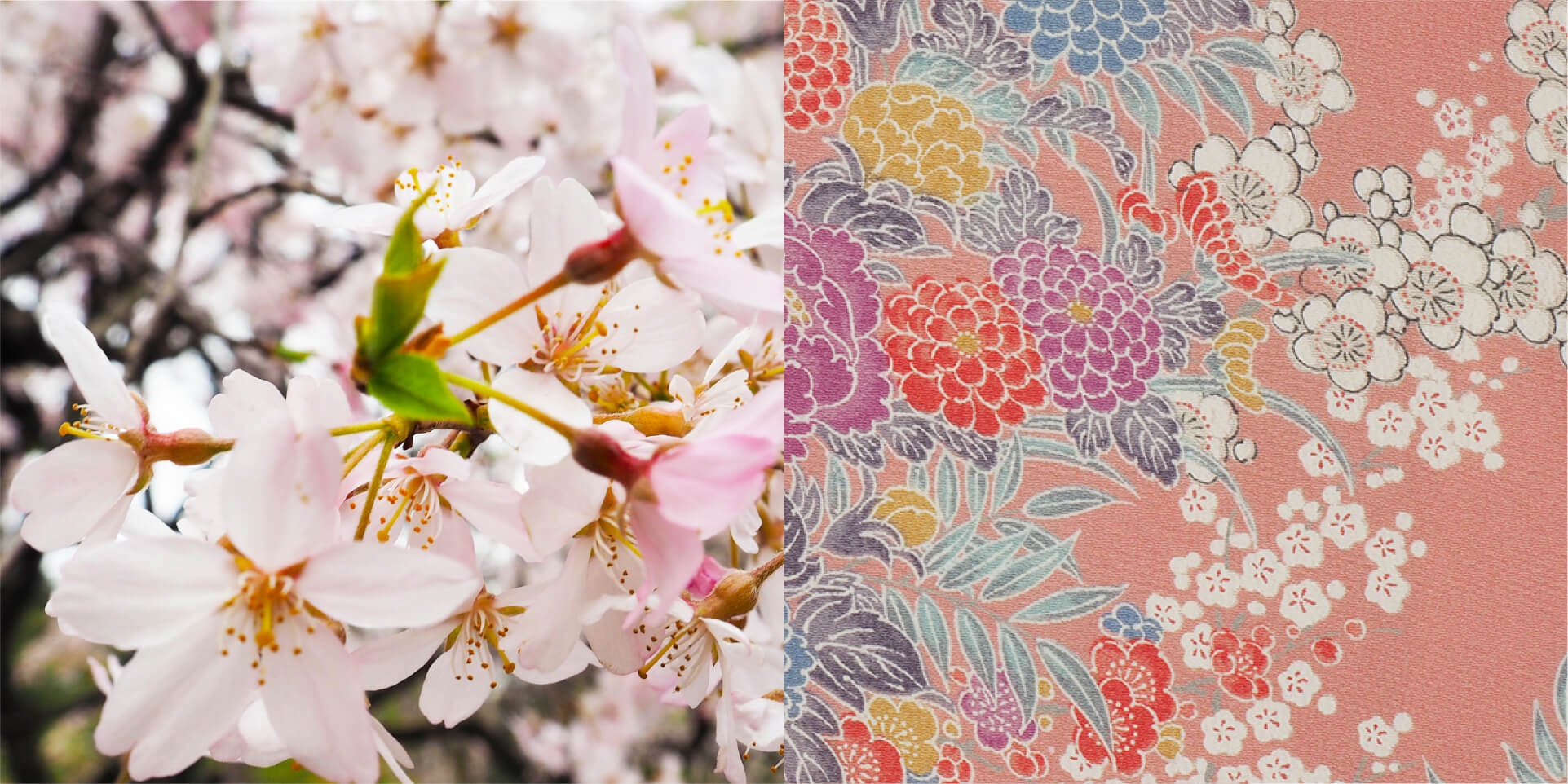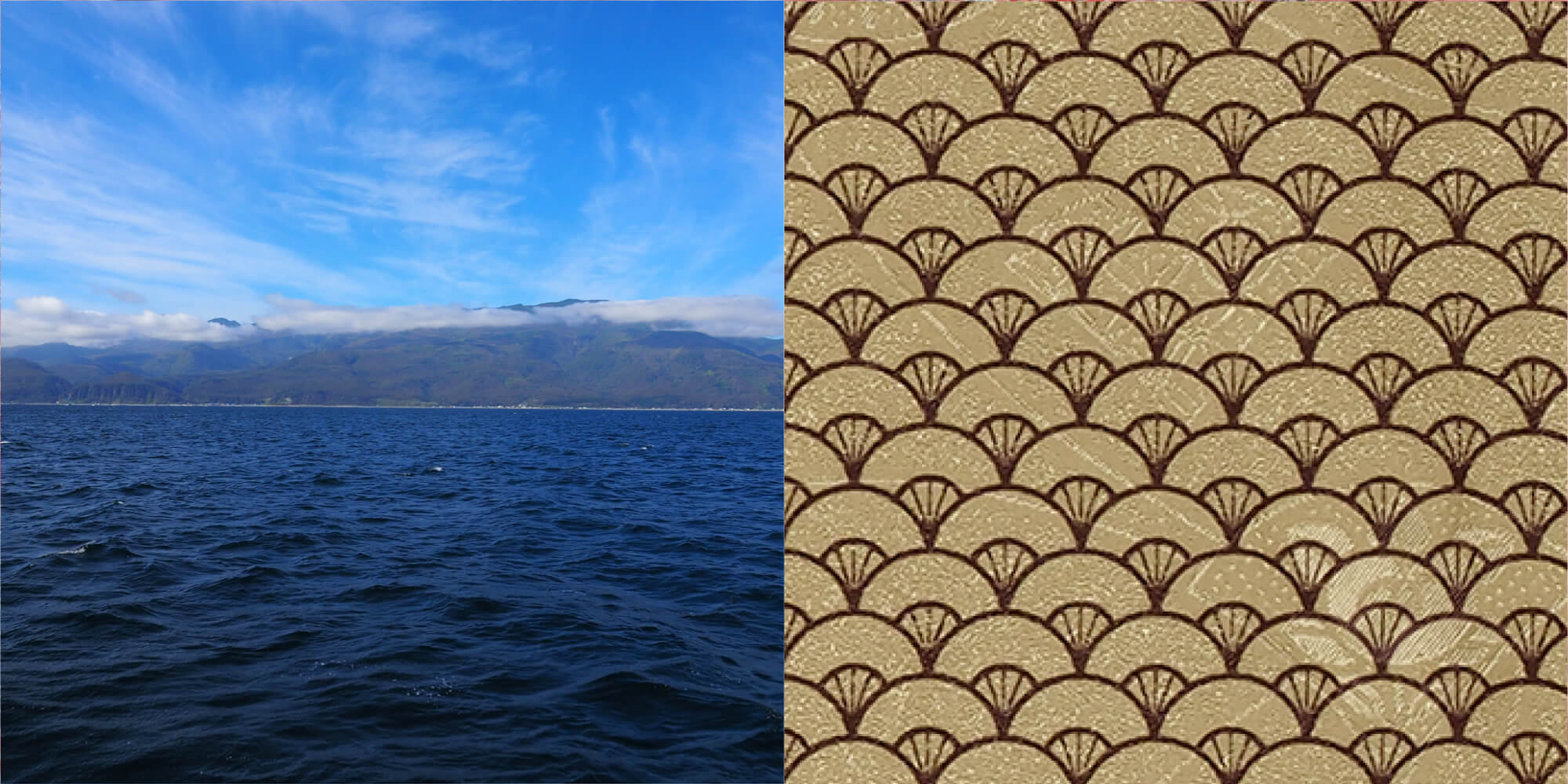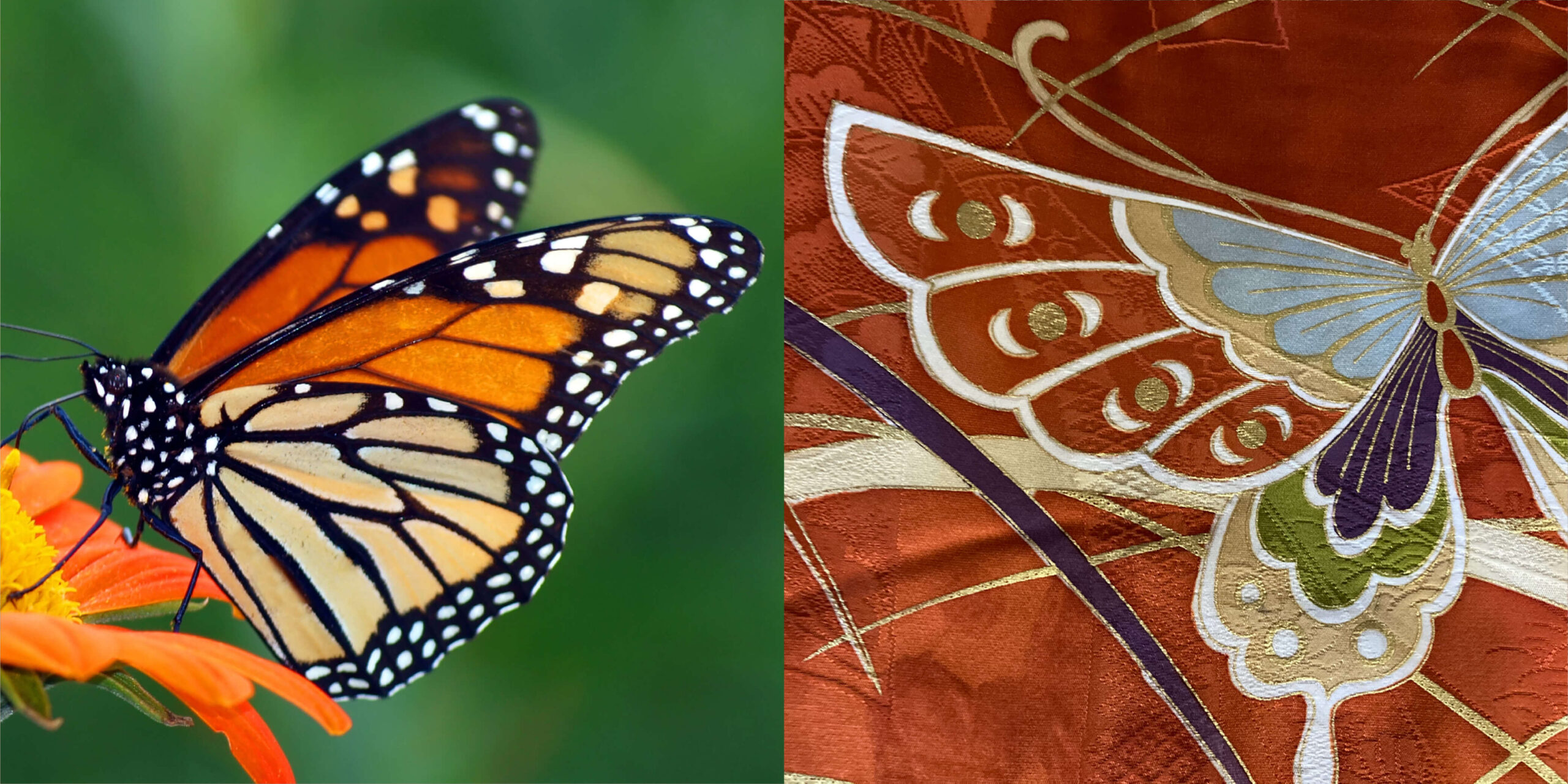




banner kimonopage-1
motif1
Crane and motif
motif Sea
butterfly and motif
The Kimono, a Japanese cultural icon, has been a fashion staple for generations. Current changes in lifestyles have limited its use to rare special occasions, such as weddings and tea ceremony. Despite its fall from daily use, the kimono still embodies distinctive characteristics of Japanese culture and sustainability.
The most distinctive sustainable characteristic of the kimono is that its pieces are straight-seamed. It is made from a single bolt of fabric, measuring approximately 12 meters in length by 36 cm in width (slightly wider and longer for men’s kimono) and cut into 8 rectangles with no wasted scraps. The kimono is fit to any person’s measurements by overlapping fabric to adjust size around the waist with an Obi, which is a long, wide belt, used specifically for a kimono.


KIMONO REBORN jacket
The Japanese culture often demonstrates their respect and appreciation of nature. This consciousness is infused into many art forms, such as “haiku” (a form of Japanese poetry), crafts, and the kimono. Many kimono use elements from nature, such as flowers, rivers, waves, and animals to depict the beauty of four seasons. They are also metaphors for rejuvenation, longevity and prosperity. The kimono fabric is the true pallet.
Kimono design is an art, requiring an artistic mind to tell a story using a single bolt of cloth. Weaving and dyeing are distinctive skill also necessary to create a beautiful kimono. Currently, many “easy-care” kimono can be found on the market. However, quality kimono cannot be mass produced. They can only be sewn by hand, with all seams sewn by special techniques, such as blind stitches, which are completely invisible. Quality kimono are tailor-made garments.

Furisode, a long-sleeved kimono which is worn by young, unmarried women. It is popular amongst Japanese to wear it when they celebrate their 20 years old.

The golden color hexagon shape represents a turtle which is a symbol of longevity and felicity.

The butterfly metaphors the luck as it transforms to a beautiful appearance from a caterpillar form.
Since kimono are traditionally tailor made, they are cherished family heirlooms, passed down to younger generations. They are sometimes unstitched and re-sewn into smaller sizes or a short kimono jacket called “haori” or furoshiki (a reusable Japanese cloth used for wrapping), further embodying the “Mottainai, Do not waste” concept originated from Japanese respect for nature.


A short kimono jacket, or “haori”, which appears to have been upcycled from a traditional silk kimono. (Above: outside view, Below: inside out view)
Currently, the kimono is considered a high-quality garment used for infrequent special occasions. Yukata, on the other hand, is a kind of casual kimono-like garment for hot season, made from cotton or synthetic fabric. It is also acceptable for yukata to be mass produced. Yukata is popular with the younger generation, mostly worn at summer festivals. Yukata is also used as a lounge wear for guests at Japanese Inns, or “ryokan”. Guests wear these after having a Japanese bath, and for wear during dinner.
The kimono’s history dates back to the Heian Era (9th to 12 century). At this time, it was worn solely by the aristocratic class. Japan’s centuries of civil unrest ended with the Edo Era (1603-1868), bringing long-awaited political and economic stability, along with a growing merchant class and cultural development. During this period, the expanding merchant class and economic prosperity brought the kimono to the general population.
This emerging merchant class was held back by Japan’s strict societal rules of hierarchy. Even with their newly found wealth, merchants were still considered a lower class than samurai. They used their new developed style, by wearing kimono in their daily life, to demonstrate their wealth and cultural prosperity. Along with the rising merchant class, the rising popularity of the kimono developed a modern textile industry, with a growing community of farmers, spinners, weavers, dyers, designers and retailers.
Following the Edo Era, the Meiji Era was all about bringing in new western influences, including western garments and their technology. Garments were produced more quickly and at lower costs. The custom of wearing kimono has particularly declined after World War 2 because of the lifestyle change in Japan. The kimono is not an easy garment to wear, greatly limiting movement, and with more women entering the workforce, its use became limited to special occasions. It has enjoyed growing interest from the younger generation since the 1990’s, mainly because of the influence of animation and movies.
The kimono has influenced fashion design outside of Japan, most notably, the costume design in the “Star Wars” movies and on the stage with David Bowie and Freddie Mercury. “KIMONO — KYOTO TO CATWALK”, edited by Anna Jackson, is a very interesting book which explores cultural and sartorial significance of kimono in historical and contemporary contexts through international perspectives.

References and for further information
BBC Style (2020 March) :
https://www.bbc.com/culture/article/20200305-the-japanese-kimono-status-symbol-to-high-fashion
“KIMONO, KYOTO TO CATWALK” edited by Anna Jackson
“Kimono Design” by Nitanai Keiko/Tuttle Publishing